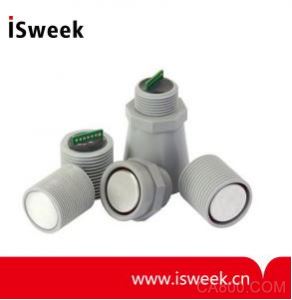With the rapid advancement of science and technology, ultrasonic sensors have become an essential part of modern life. These devices are widely applied in various industries such as manufacturing, energy, and metallurgy for measuring materials like building supplies, chemicals, food products, automobiles, warehousing, shipbuilding, textiles, transportation, and more. Their high precision, stable performance, and temperature compensation capabilities make them ideal for applications like level monitoring, open channel flow detection, robotics, and food processing. In both liquid and solid material industries, they provide reliable measurements that support efficient operations.

Although ultrasonic technology is extensively used, it's important to recognize that no technology is perfect. Over time, we’ve come to understand the strengths and limitations of ultrasonic sensors, and these factors can influence their effectiveness in different scenarios. A deeper understanding of how they work and their potential drawbacks is crucial for maximizing their benefits.
Let’s start by exploring how ultrasonic sensors function. They operate based on the properties of ultrasonic waves. The core component is a piezoelectric wafer, which can both emit and receive sound waves. When a pulse signal at the natural frequency of the wafer is applied, the piezoelectric material vibrates, generating ultrasonic waves. Conversely, when the sensor detects incoming waves, it converts the mechanical vibrations into electrical signals. These sensors come in various types, including straight probes, angle probes, surface wave probes, Lamb wave probes, and dual probes, each designed for specific applications.
One of the key advantages of using ultrasonic waves for measurement is their high frequency, short wavelength, and strong directionality. This makes them highly effective for precise detection. They can penetrate through liquids and solids, even opaque materials, reaching depths of tens of meters. Additionally, ultrasonic waves reflect strongly when encountering impurities or interfaces, making them ideal for detecting flaws, measuring distances, and identifying moving objects through the Doppler effect.

However, there are also some limitations. For example, the piezoelectric materials used in ultrasonic sensors typically have a high Curie point, meaning they can withstand high temperatures. However, medical-grade sensors often require cooling systems due to higher operating temperatures. Sensitivity depends on the quality of the piezoelectric wafer, with higher electromechanical coupling coefficients leading to better performance. Some current challenges include:
1. Fixed frequency ranges—most sensors operate within narrow bands (e.g., 40kHz), limiting flexibility.
2. High driving voltages—often between 100Vpp and 1500Vpp, requiring complex circuitry.
3. Sensitivity levels vary, and higher sensitivity is generally preferred.
Despite these challenges, ultrasonic sensors remain a powerful tool in many fields. They can detect objects beyond human hearing range, enabling applications like distance measurement, flaw detection, and even underwater exploration. From industrial automation to medical imaging, they play a critical role in our daily lives.
If you're interested in learning more about the pros and cons of ultrasonic sensors, experimenting with them firsthand can be a great way to understand their capabilities and limitations. By addressing their shortcomings, you can gain valuable insights and even contribute to future improvements in this technology. Consulting experts in the field can also help you deepen your knowledge and explore new possibilities.
Mall solar carport system,Mall solar carport system cost,Mall solar carport system design
Hebei Jinbiao Construction Materials Tech Corp., Ltd. , https://www.pvcarportsystem.com